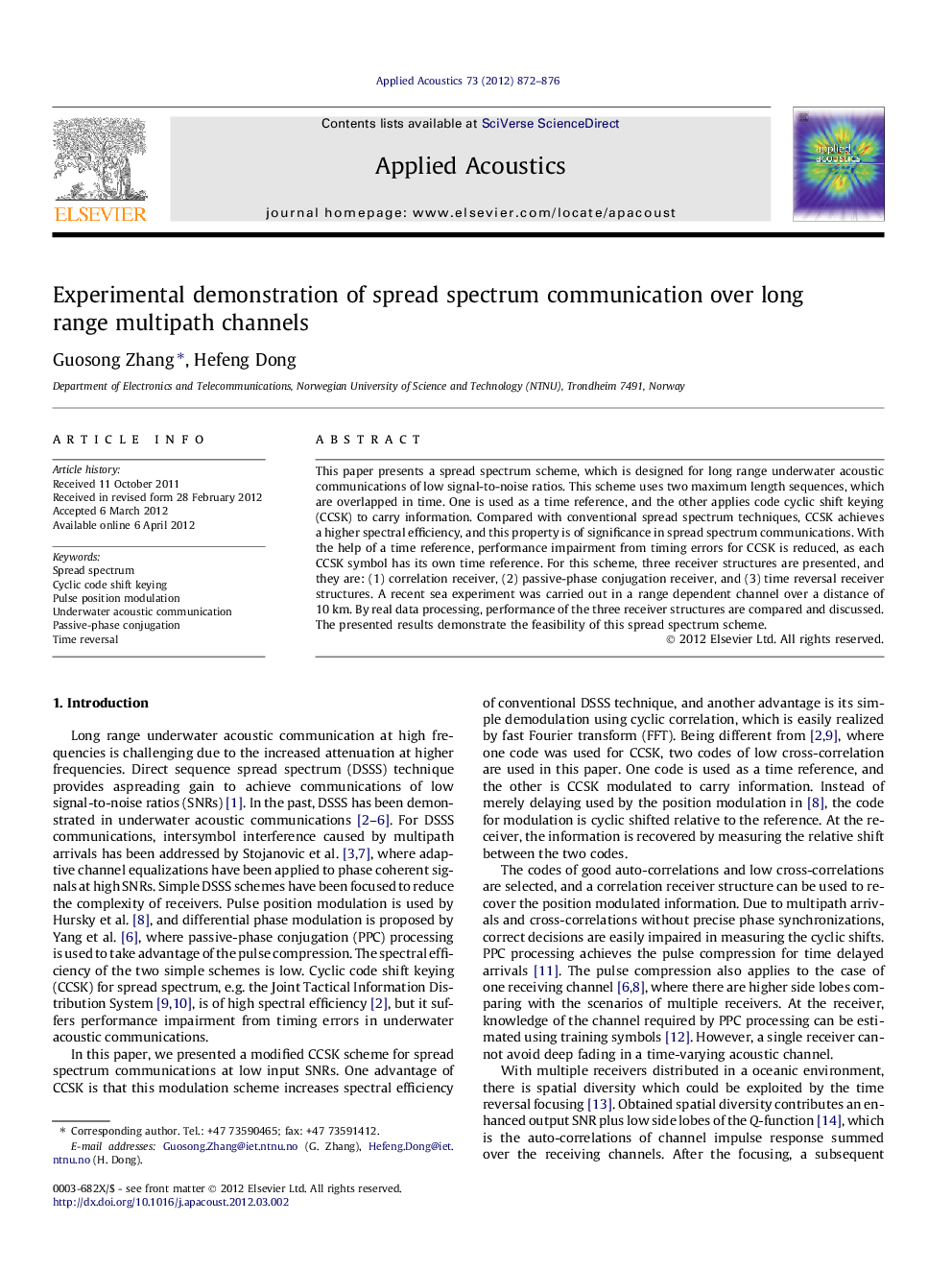| Article ID | Journal | Published Year | Pages | File Type |
|---|---|---|---|---|
| 754800 | Applied Acoustics | 2012 | 5 Pages |
This paper presents a spread spectrum scheme, which is designed for long range underwater acoustic communications of low signal-to-noise ratios. This scheme uses two maximum length sequences, which are overlapped in time. One is used as a time reference, and the other applies code cyclic shift keying (CCSK) to carry information. Compared with conventional spread spectrum techniques, CCSK achieves a higher spectral efficiency, and this property is of significance in spread spectrum communications. With the help of a time reference, performance impairment from timing errors for CCSK is reduced, as each CCSK symbol has its own time reference. For this scheme, three receiver structures are presented, and they are: (1) correlation receiver, (2) passive-phase conjugation receiver, and (3) time reversal receiver structures. A recent sea experiment was carried out in a range dependent channel over a distance of 10 km. By real data processing, performance of the three receiver structures are compared and discussed. The presented results demonstrate the feasibility of this spread spectrum scheme.
